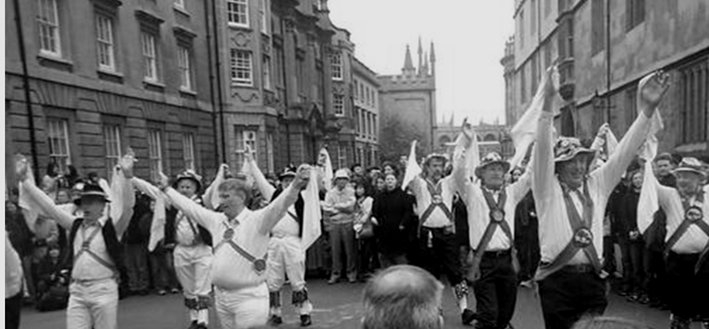England
Art
English art was dominated by imported artists throughout much of the Renaissance, but in the 18th century a native tradition became much admired. It is considered to be typified by landscape painting, such as the work of J.M.W. Turner and John Constable. Portraitists like Thomas Gainsborough, Joshua Reynolds are also significant.
Pictorial satirist William Hogarth pioneered Western sequential art, and political illustrations in this style are often referred to as "Hogarthian". Following the work of Hogarth, political cartoons developed in England in the latter part of the 18th century under the direction of James Gillray. Regarded as being one of the two most influential cartoonists (the other being Hogarth), Gillray has been referred to as the father of the political cartoon, with his satirical work calling the king (George III), prime ministers and generals to account.
Cuisine
A full English breakfast with scrambled eggs, sausage, black pudding, bacon, mushrooms, baked beans, hash browns, and half a tomato.
Modern English cuisine is difficult to differentiate from British cuisine as a whole. However, there are some forms of cuisine considered distinctively English. The Full English Breakfast is a variant of the traditional British fried breakfast. The normal ingredients of a traditional full English breakfast are bacon, eggs, fried or grilled tomatoes, fried mushrooms, fried bread or toast, and sausage, usually served with a cup of coffee or tea. Black pudding is added in some regions as well as fried leftover mashed potatoes called potato cakes or hash browns. Another well known English dish, English Christmas dinner traditionally consists of turkey which first appeared on the English Christmas dinner table in 1573, and is often accompanied with roast beef or ham, and served with stuffing, gravy, roast potatoes and vegetables.
Modern English cuisine is difficult to differentiate from British cuisine as a whole. However, there are some forms of cuisine considered distinctively English. The Full English Breakfast is a variant of the traditional British fried breakfast. The normal ingredients of a traditional full English breakfast are bacon, eggs, fried or grilled tomatoes, fried mushrooms, fried bread or toast, and sausage, usually served with a cup of coffee or tea. Black pudding is added in some regions as well as fried leftover mashed potatoes called potato cakes or hash browns. Another well known English dish, English Christmas dinner traditionally consists of turkey which first appeared on the English Christmas dinner table in 1573, and is often accompanied with roast beef or ham, and served with stuffing, gravy, roast potatoes and vegetables.
Tea and beer are typical and rather iconic drinks in England, particularly the former. Traditionally, High Tea would be had as a separate meal. Cider is produced in the West Country and, more recently, East Anglia and the south of England has seen the reintroduction of vineyards producing white wine on a small scale.
Roast beef is a food traditionally associated with the English; the link was made famous by Henry Fielding's patriotic ballad "The Roast Beef of Old England", and William Hogarth's painting of the same name. Indeed, since the 1700s the phrase "les rosbifs" has been a popular French nickname for the English.
Folklore
Morris dancing is one of the more visible English folk traditions, with many differing regional variations.
English folklore is the folk tradition that has evolved in England over the centuries. England abounds with folklore, in all forms, from such obvious manifestations as semi-historical Robin Hood tales, to contemporary urban myths and facets of cryptozoology such as the Beast of Bodmin Moor. The famous Arthurian legends may not originated in England, but variants of these tales are associated with locations in England, such as Glastonbury and Tintagel.
English folklore is the folk tradition that has evolved in England over the centuries. England abounds with folklore, in all forms, from such obvious manifestations as semi-historical Robin Hood tales, to contemporary urban myths and facets of cryptozoology such as the Beast of Bodmin Moor. The famous Arthurian legends may not originated in England, but variants of these tales are associated with locations in England, such as Glastonbury and Tintagel.
Religion
Canterbury Cathedral is the seat of the Church of England. It was the property of the Roman Catholic Church before the English Reformation.
In England, Christianity became the most practiced religion centuries ago. Polytheistic religions, often referred to as paganism, were practiced before Christianity took hold. These religions include Celtic polytheism, Norse paganism, Roman polytheism, and others. Some were introduced by the Anglo-Saxons, who had their origins in ancient Germanic tribes.
In England, Christianity became the most practiced religion centuries ago. Polytheistic religions, often referred to as paganism, were practiced before Christianity took hold. These religions include Celtic polytheism, Norse paganism, Roman polytheism, and others. Some were introduced by the Anglo-Saxons, who had their origins in ancient Germanic tribes.
Symbols
Science
The English have played a significant role in the development of science and engineering. Prominent individuals have included Roger Bacon, Francis Bacon, William Harvey, Robert Hooke, Isaac Newton, Henry Cavendish, Isambard Kingdom Brunel, Francis Crick, Abraham Darby, Michael Faraday, Charles Darwin, James Chadwick, Joseph Swan, Barnes Wallis, Alan Turing, Frank Whittle, Sir Tim Berners-Lee and Stephen Hawking. Furthermore, it is home to the Royal Institution, the Royal Society, the Greenwich Observatory and its associated meridian.
By Fiorella Fernandez
No hay comentarios:
Publicar un comentario